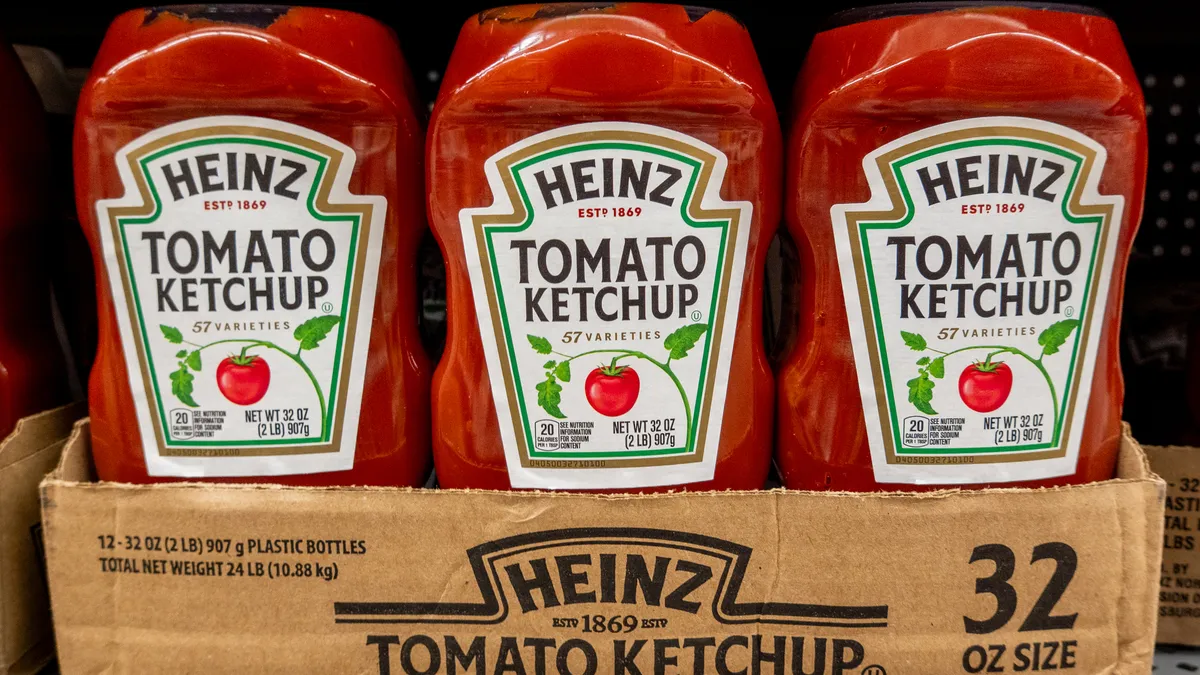This is Patent Pending. Supply chain-related patent applications are published every day and this is where we'll talk about the ones that could have the biggest impact on the supply chain and the ones that challenge the norm. We want to give you an idea of where supply chains are heading and what the industry is thinking. Read the previous issue here.
Make it tall ... now automate it

The automation of a warehouse is, at this point, nothing surprising. Companies from Amazon to Nike have started using goods-to-person picking solutions, where robots bring inventory to a human operator.
But many of these types of solutions don't take full advantage of the space in a warehouse, Crown Equipment Corporation argued in a patent application filed this week. Crown made the case for an automated environment that also takes advantage of a multilevel racking system.
The system relies on two vehicles working in tandem: one to pick (108 in the image above), and one to transport (106 in the image above).
"Rather than transporting mobile storage units ... exclusively to floor-level locations, a storage unit transporter can coordinate with a pick-place vehicle to provide automated or semi-automated access to storage bays not directly accessible to the storage unit transporter," the patent reads.
The system is designed to carry mobile storage units (104 in the image above) from the racking system to the human picker and is designed to store a variety of goods, according to Crown.
Because the transporter carries the storage unit from underneath, it won't need to rely on the picking vehicle for units on the ground level. This means a warehouse could put its faster-moving inventory on the bottom of the racking system to allow for faster access, according to the patent.
The storage unit transporter is autonomous, but the pick-place vehicle could be manually operated, or partially or fully autonomous, the patent explains, adding that it is "any type of conventional or yet-to-be-developed vehicle capable of placing mobile storage units in the multiple level racking system."
The warehouse management system would coordinate the movement of vehicles.
Read up:
-
Want to automate your warehouse? Wait until you understand your data
-
Robots as a Service: A low-risk path to warehouse automation?
Your risk score is being calculated

Risk scores are fairly common, and plenty of companies are pitching their services to generate the digit that indicates if a supplier is a business liability. But Ivalua, a procurement software company, argued in a patent published this week that the traditional way of calculating risk scores has its drawbacks.
One issue is speed: It takes time for risk scores to work their way from management to operations. Another issue is they don't tend to rely much on a company's internal data but instead on external sources, such as credit scores. And finally, because the data comes from disparate sources, integrating the data into the system can be time consuming.
The patent explains that the risk score system could pull internal data from a variety of sources, including ERP software, customer relationship management systems or inventory. It could include information on accounting, purchase records, inventory logs, production schedules, supplier ratings, warehouse locations and transportation schedules, according to the patent.
The internal data would combine with external data, which could include product descriptions, part numbers, fulfillment lead times, credit scores, geographic security warnings, weather or import delays.
The risk score system would include a "load module," responsible for ingesting this data in a multitude of formats and organizing it within a database that can be used for querying and analysis. An API would carry out the data flow from the load module to the various databases within the risk score system.
An "aggregator module" would pull variables from the up-to-date databases and calculate a risk score for a given supplier.
The system can be set up to automatically query the data in response to sourcing requests in the form of purchase orders or requisitions. It will "expeditiously calculate the supplier risk score by leveraging the risk values that have been pre-aggregated," the patent reads. This allows buyers to look at risk scores in real time as they make purchasing decisions. The user could also change what the risk score takes into account by using SQL queries to change the calculation scheme based on specific needs.
Ivalua envisions that the risk score system could also provide alerts when scores cross user-determined thresholds.






















